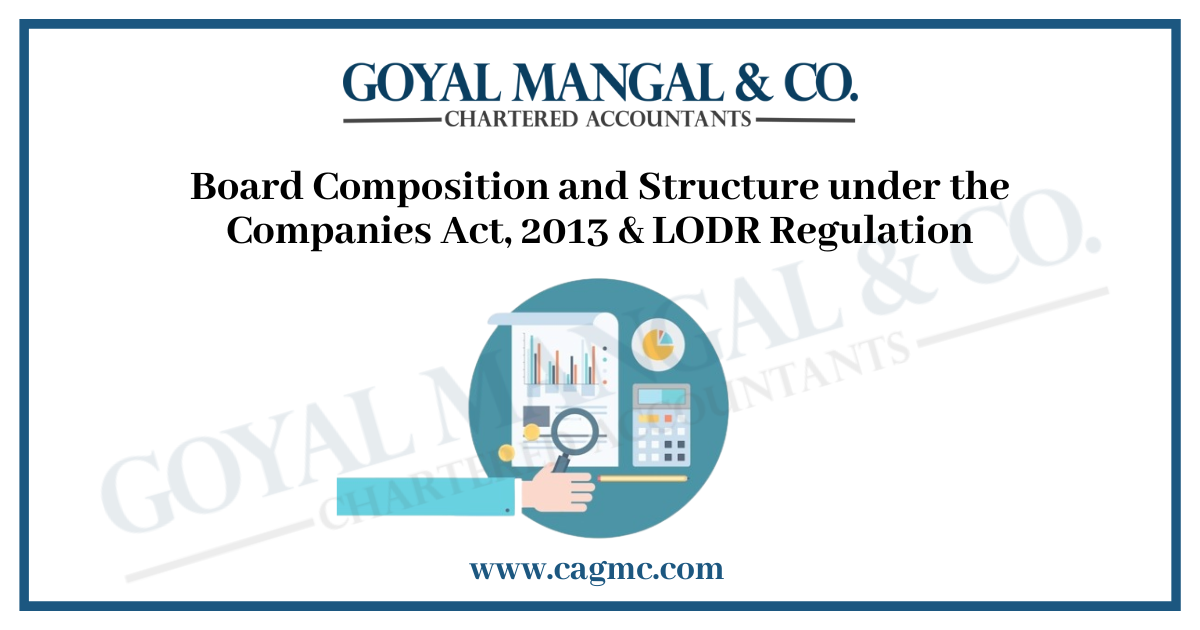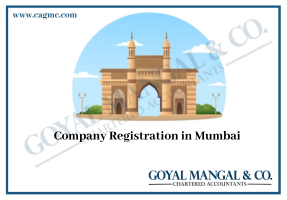
The Board Composition and structure are critical body, who are obliged to make strategic decisions and ensure corporate governance. This corporate management is regulated by two significant governmental bodies the Companies Act, 2013, and the SEBI (Listing Obligations and Disclosure Requirements) Regulations, 2015 (LODR Regulations). In the present article, we are going to explore the board composition and structure under the Companies Act, 2013 & SEBI LODR Regulations.
Table of Content
Short Note on Board Composition and Structures
Board composition and structure means how the board of directors of the company is organized, performed, and composed. In corporate governance, the board of directors play a vital role in shaping the strategic direction, overseeing its performances, and representing the shareholder’s or other stakeholder’s interests. Here are two prominent concepts:
-
-
Board Composition:
The composition of the board of directors includes the elements, characteristics, diversity and qualifications of the members. There are certain elements of the composition of the board of directors include:
- Mention the board size;
- Define the executive and non-executive directors;
- Diversity in members;
- Experience and qualifications
- Board Structure: It involves the structure of the company and defines the role of the board within the company. Certain key elements of board structure are:
- Board Committees;
- Chairperson;
- Meetings of the Board;
- Guidelines regarding ethical code of conduct;
- Structure of the board.
-
What is Board Composition and Structure under the Companies Act, 2013?
The board composition and structure provide the framework of the company’s board of directors. There are board composition and structure under the Companies Act, 2013:
-
-
-
Board Composition
-
-
Here are significant aspects of the composition of the board of directors under the Companies Act, 2013 are:
-
-
- Minimum and Maximum number of directors: In the private company, there must be at least two directors, whereas in the public company, there must be at least three directors. The maximum number of directors depends on the company’s Articles of Association.
- Independent Directors: Several companies need independent directors in their companies. They are individuals, who are not in relation with the company or its management. There is a specific requirement to appoint independent directors, which depends on the size and listing status of the company.
- Women Director: The Companies Act, 2013 is compulsory in certain companies like the composition of the board of directors of listed companies and prescribed classes of companies, must hire a woman director on their company’s board.
- Resident Director: Each company must have at least one director who stays in India for a whole period of not less than 182 days in a previous calendar year.
- Qualifications and disqualifications: The Companies Act, 2013 defined the qualifications and disqualifications of the directors.
-
Role of Independent Women Director in shaping Companies Environment
-
-
-
Board Structure
-
-
It provides the role and structure of the company’s board and here are the key elements of board structure under the Companies Act, 2013:
-
-
- Board Meeting: The Act gives the number of conducting meetings. That is significant for making decisions. A meeting is required at least once in each quarter.
- Board Committees: The board can set up several committees like nomination and remuneration committee, audit committee, and stakeholders relationship committee.
- Director’s code of conduct and senior management: It ensures the ethical behaviour of the company’s directors and sets a high standard of integrity.
- Rotation of Auditors: The Act restricts the tenure of statutory auditors to encourage audit independence and rotation.
-
Board Composition and Structure under SEBI LODR Regulations
LODR Regulation’s full form is Listing Obligations and Disclosure Requirements under the SEBI Regulations, 2015. This regulation is provided with certain guidelines to secure the shareholder’s interests, transparency, and accountability. There is an overview of the board of structure and composition under the SEBI LODR Regulations:
-
-
-
Board Structure:
- Chairperson: The regulations do not mention the separate roles of CEO and chairperson. However, they encourage a separation for effective corporate governance. This will help the company to prevent conflicts of interest.
- Board Meetings: The LODR Regulations provide guidance on the frequency and conduct of board meetings. It also emphasises the significance of regular board meetings to make crucial decisions and provide oversight.
- Training of Director: Companies are encouraged to conduct appropriate training for their directors to enhance their knowledge and skills in areas relevant to the company’s business.
- Rotation of Auditors: The regulations place restrictions on the tenure of statutory auditors to promote audit independence and rotation.
-
-
-
Board Composition:
-
-
- Minimum number of directors: The said regulation provides that a listed company must have three minimum directors on its board. The specific number depends on the company’s Articles of Association, but not less than three.
-
- Independent directors: The said regulation needs at least one-third of the board should be independent directors as they give an impartial perspective and make sure about corporate governance.
-
- Board’s Chairperson: The LODR regulation mention that the board’s chairperson should be a non-executive director. If the chairperson is not an executive director, at least one-third of the board should comprise independent directors.
-
- Senior management’s code of conduct: The regulations compulsorily mentioned that the listed companies should have set up their code of conduct for directors and senior management.
-
Applicability of Independent Director in a Company
End Notes
The composition and structure of a company’s board is not just formalities, but the significance of efficient corporate governance. The SEBI LODR Regulations, and Companies Act, 2013 provides comprehensive guidance to make sure the board is competent, diverse, and aligned with the best interest of stakeholders along with the company. By determining these regulations, companies are developing their trustworthiness, and credibility, attracting investments, and building lasting relationships with the public and shareholders. These regulations are not merely set up for compliance, but they boost the company’s culture and increase transparency, obligation, and answerability in the corporate world.
[/column]







